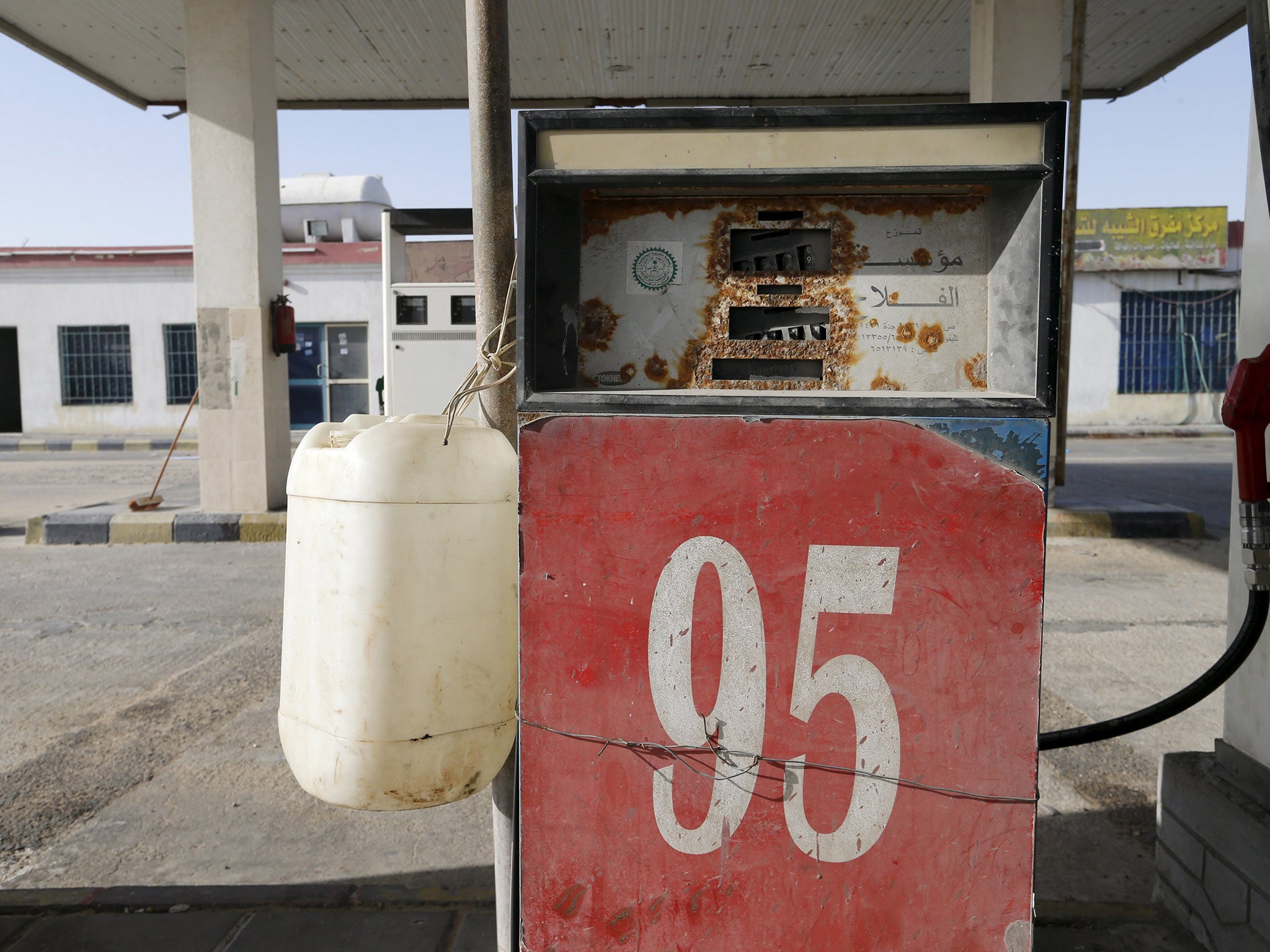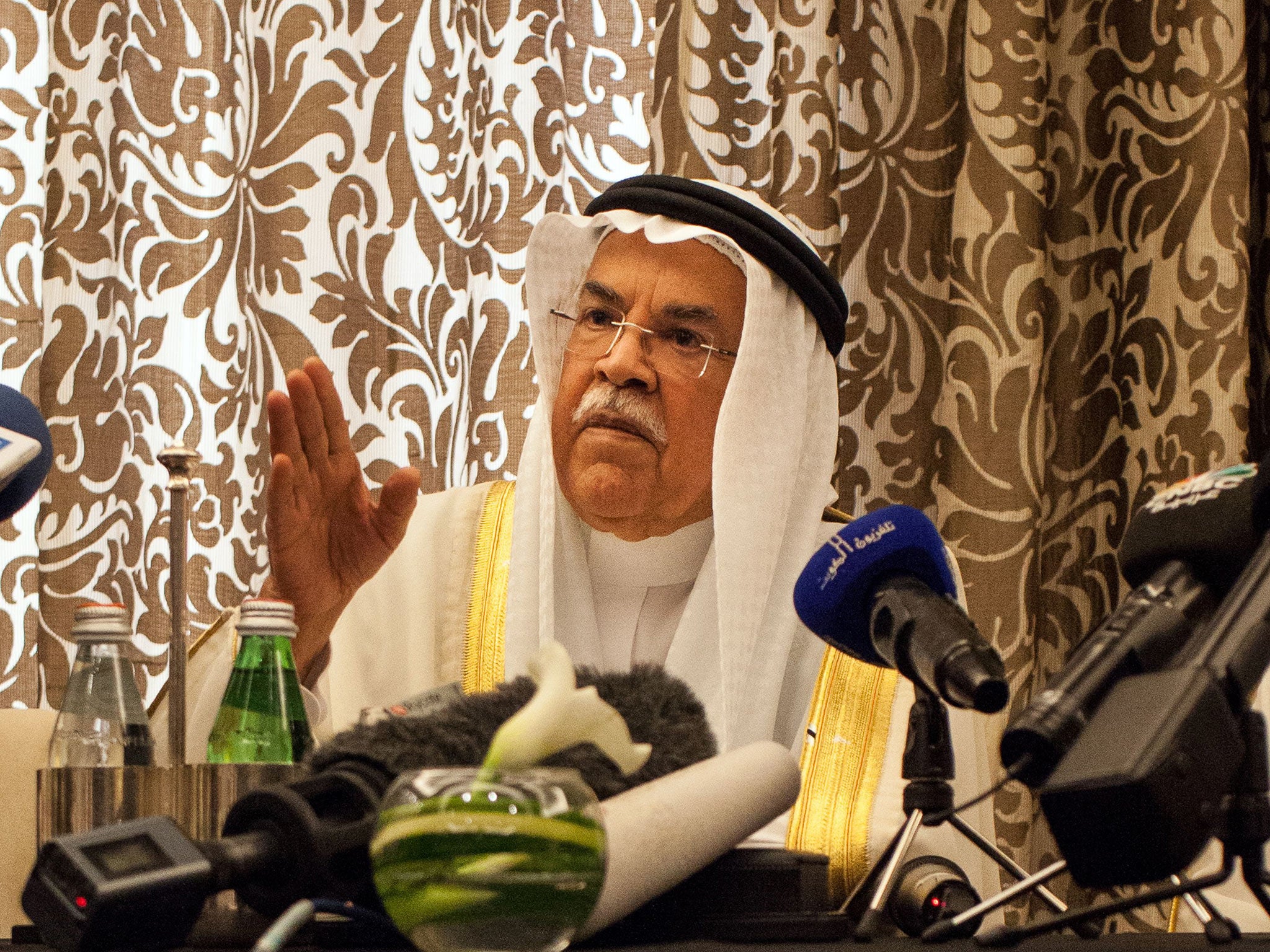Saudi Arabia versus the great oil stockpile
The kingdom’s struggle with US shale oil producers over market share has led to massive overproduction and forecasts suggest that it will take years to clear the glut. Grant Smith reports on the crisis in the global industry

Even if Saudi Arabia wins its struggle with American shale producers over market share, it will face a new billion-barrel adversary.
It won’t be regional nemesis Iran, a resurgent Iraq or long-standing competitor Russia. The truth is more prosaic: even when overproduction ends, a stockpile surplus of more than 1 billion barrels built up since 2014 will remain, weighing on prices. Inventories will keep accumulating until the end of 2017, the International Energy Agency forecasts, and clearing the glut could take years.
“We may get to the end of the year, and even though supply and demand are in balance, the market shrugs and says ‘So what?’ because it’s waiting for proof of inventory draw-downs,” said Mike Wittner, head of oil markets at Société Générale in New York. “Moving from stock-builds to balance might not be enough.”
Since it was unveiled in late 2014, Saudi Arabia’s strategy to bring the world’s oversupplied oil markets back into balance by squeezing competitors with lower prices has proved gruelling, dragging crude down to less than $40 a barrel. While a gradual decline in US production signals supply will stop growing, the second part of the process may prove the longest as stockpiles slowly contract.
For a historical precedent, Goldman Sachs points to the oil glut that developed in 1998-99 as demand plunged in the wake of the Asian financial crisis. Crude prices kept falling even as the Organisation of Petroleum Exporting Countries made output cuts in March and then June of 1998, slipping below $10 a barrel in London in December of that year. It wasn’t until stockpiles in developed economies started dropping in early 1999 that the recovery took shape.
Between late 2014, when developed-world stockpiles were at about average levels, and the end of this year, global inventories will have swelled by about 1.1 billion barrels, IEA data shows. Another 37 million will be added in 2017. Taking the agency’s projections for how quickly inventories will then fall, and estimates from Energy Aspects that 290 million barrels will flow into China’s strategic reserves, it will take until 2021 to clear what’s accumulated.
The latest data from the American Petroleum Institute shows the build-up in the United States is only getting bigger, with the nation’s crude stockpiles ballooning by 9.9 million barrels last week.

“For the previous eight quarters to this one, we have had global implied stock-builds, so we have accumulated a lot of oil,” said Harry Tchilinguirian, head of commodity markets strategy at BNP Paribas in London. “It’s going to take a lot of time to work out that excess oil from the system.”
Inventories could erode as early as this summer because the decline in US shale output will probably be steeper than is widely assumed, according to Vienna-based consultants JBC Energy; it predicts prices could rebound to $50 a barrel in June. Standard Chartered says much of the surplus the IEA estimates accumulated in the fourth quarter of 2015 hasn’t actually appeared in storage, suggesting the excess is smaller than thought.
“The most likely explanation for the majority of the missing barrels is simply that they do not exist,” and are the “result of underestimation of demand and overestimation of supply”, said Paul Horsnell, head of commodities research at Standard Chartered. “They imply that the global market will swing back into deficit well before consensus.”
Saudi Arabia repeated last month that it won’t speed up the re-balancing process by reducing its own supply. While the kingdom and some other Opec members have agreed with Russia to freeze output at January levels, a co-ordinated cut is “not happening”, Ali al-Naimi, the oil minister, said at the end of February.
Inventories started to swell in 2014, as the wave of supply unleashed by the US shale oil boom, coupled with other new output, outpaced growth in global oil demand by a factor of three. The pile-up continued in 2015 as Opec members such as Saudi Arabia and Iraq raised production to defend their share of world markets. Tanks are poised to fill even more as Iran – freed in January from international sanctions – pushes new exports into a market that’s already saturated.
The time it will take to use up what’s sitting in tanks around the world adds to Goldman Sachs’s confidence in its prediction, by now an oil-industry mantra, that prices will stay “lower for longer”.
“The market will have a hard time trading higher once supply and demand shift into a deficit as the inventory overhang will likely act as a drag until stock levels are normalized,” said Jeff Currie, head of commodities research at Goldman Sachs in New York.
Bloomberg
Join our commenting forum
Join thought-provoking conversations, follow other Independent readers and see their replies
Comments
Bookmark popover
Removed from bookmarks